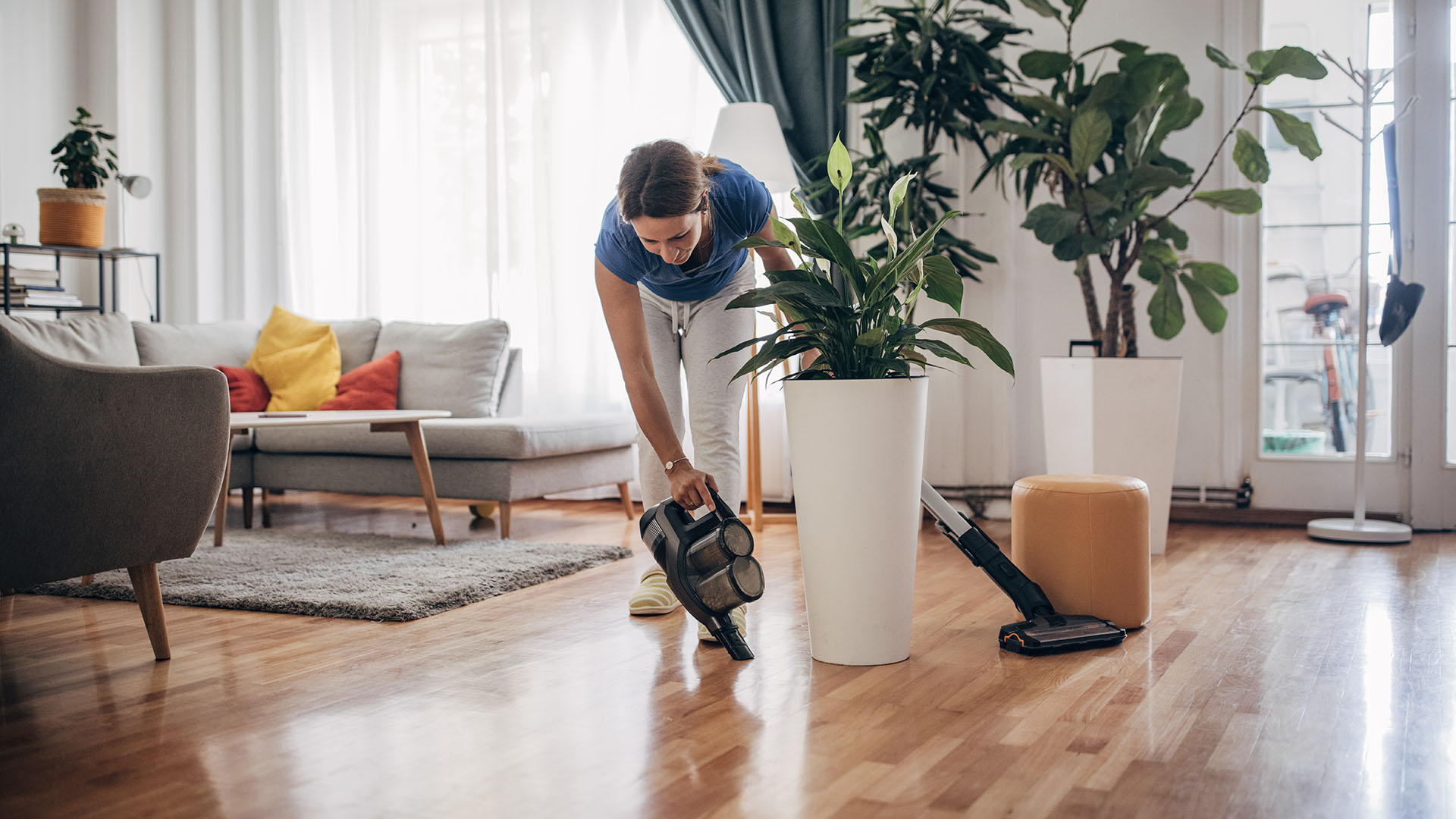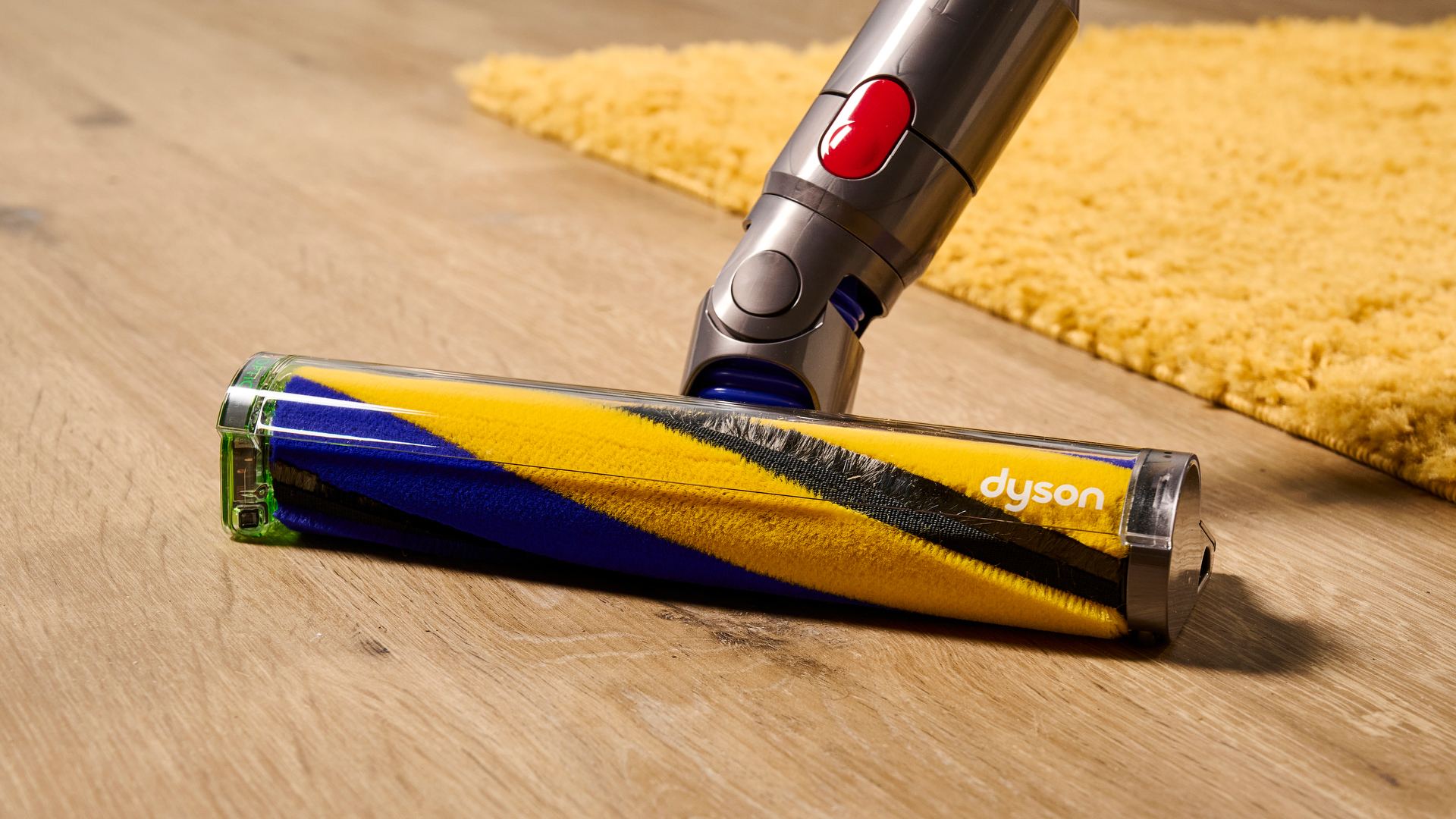How to clean a hardwood floor
Keep your hard floors clean and shiny without ruining them

Knowing how to clean a hardwood floor is a must if you have more than just carpets in your home and you want to keep everything spotless without risking damage. Hardwood floors are great because they don't require endless vacuuming and they're much easier to clean up if you spill something. Plus, you can spruce them up with the odd rug if you want something that feels soft under your feet and that pets can corner more effectively on.
They're not maintenance free, though, and to keep them in best condition you'll need to keep on top of a light cleaning schedule. Fortunately if you have one of the best vacuum cleaners it should be up to most elements of cleaning a hardwood floor, but there are a few aspects that might need more specialized equipment to get shiny results. I'll also answer some important questions, such as whether you should mop a hardwood floor or not.
I've had hardwood floors in my home for the last 10 years or so and I've learned a thing or two about keeping them clean along the way. Here's what you need to know about how to clean a hardwood floor, starting with the important question of what kind of hardwood floors you actually have.
What type of hardwood floor do you have?
All hardwood floors might more or less look the same, but they're quite different beneath the surface. This won't make much difference when it comes to cleaning on a day-to-day basis, but if you're planning on mopping your floor (more on that in a bit) it's important to know what kind of hardwood floor your dealing with.
The main types of hardwood floor are as follows:
- Hardwood: this type of floor is made from solid wood and is usually the most expensive kind. It's hardwearing and very long-lasting, particularly if you take good care of it and avoid getting it wet.
- Engineered hardwood: this is made from multiple timber layers topped off with a hardwood veneer. It's more versatile than hardwood and more tolerant of moisture, but you still don't want to soak it.
- Sealed hardwood: this can be either solid wood or engineered wood with a protective top layer (usually polyurethane) that makes it much more water-resistant.
- Wood-look: the cheapest kind of hardwood floor, it's generally made with a wooden particleboard base, topped with a wood-look laminate layer and finished with a transparent protective layer.
Should you mop a hardwood floor?
This very much depends on the type of hardwood floor you have. If your floors consist of untreated and unsealed solid hardwood or engineered hardwood, you should avoid getting too much water on them because sooner or later you'll end up with a ruined floor. This doesn't mean that mopping is out of the question; it does mean that you should take care to wring your mop beforehand so that it's damp rather than sopping wet.
While you don't need to be quite so careful with wood-effect floors, it still pays to use a well-wrung mop, simply because it'll dry a whole lot quicker than it would if you slopped water all over it.

What cleaning products should you use to clean a hardwood floor?
You shouldn't have to use very much in the way of cleaning products on your hardwood floor. As we'll detail below, much of the regular maintenance that'll keep your floors looking great is product-free. That said, when you're mopping your floor, you'll probably want to use some kind of cleaning product that'll help shift dirt and perhaps leave everything smelling pleasant.
While it's possible to simply use a little dish soap in warm water for mopping your floors, we'd suggest playing it safe and using a cleaning solution that's made for hardwood floors, taking care to dilute it as instructed. The internet may tell you that you can instead use vinegar and water on your floor, but please don't do that: it's great for cleaning lots of things, but it can easily ruin a hardwood floor.
Get daily insight, inspiration and deals in your inbox
Sign up for breaking news, reviews, opinion, top tech deals, and more.
To keep your hardwood floor in tip-top condition, an occasional application of polish is a must, but again you need to choose carefully. If your hardwood floor isn't sealed, a wax-based polish applied every few months will keep things shiny, while a water-based polish is the thing for sealed hardwood or wood-look floors. Be sure to buy a polish that's listed as being suitable for your floor and follow the instructions carefully. And whatever you do, don't think you can use ordinary furniture polish on your hardwood floor, because it'll leave it dangerously slippery.
How to make a hardwood floor shine
The best way to achieve a reliably shiny hardwood floor is to keep it clean on a day-to-day basis. That doesn't mean giving it the full treatment every single day, though; instead follow this schedule and your floors will look fantastic all year round.
- Daily: sweep your floor with a soft broom or dry mop to get rid of dust. Also be sure to tackle wet spills as quickly as possible so that they won't leave a stain.
- Weekly: vacuum your floor or give it a thorough dusting with a microfiber dry mop.
- As needed: clean up spills with a wet (but not too wet) mop.
- Every couple of months: if your floor needs it, mop it with a cleaning solution suitable for your type of hardwood floor.
If this seems like a lot of hard work for you, bear in mind that you can make it all much easier if you invest in a vacuum cleaner that's suited to cleaning hardwood floors.
What kind of vacuum is best for hardwood floor?
Many of the best vacuum cleaners are suitable for use on hardwood floors, and they'll do a great job of keeping dust and dirt at bay. However, many vacuums feature bristly brushrolls that are great on carpet but which will scratch up hardwood floors with repeated use. So before you buy, it pays to check whether a vacuum comes with a soft brushroll; you'll find that there are plenty of options. The best Dyson vacuums come with a dedicated fluffy floorhead for this purpose (take a closer look in this Dyson vacuum tools guide).

For deeper cleaning, a wet-dry model that can both vacuum and mop your floor would be an excellent choice. Once again, though, you'll have to choose wisely depending on what your floor is made of. Some wet-dry vacuums can leave your floor quite wet, which isn't good for untreated solid hardwood or engineered hardwood, but the best options will dry as they go, and some will even self-propel, making life even easier for you.
But if even that seems too much like hard work, you'll find that some of the best robot vacuums can both vacuum and mop. They'll do a good job of daily maintenance cleans (especially if you invest in a more advanced model), but you'll still have to take care of deeper cleans yourself.
A professional writer with over a quarter of a century's experience, Jim has been covering mattress and sleep-related subjects for TechRadar, Tom's Guide and T3 over the past few years, gathering an in-depth knowledge of the workings of the mattress industry along the way. Previously Jim has covered a wide variety of subjects, working widely in the tech and gaming sectors, and more recently covering the design and wellness industries.
